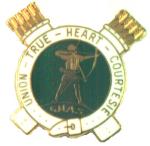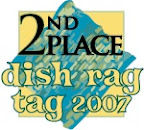Some of you with present or former connections to my university are familiar with Brewer-Hegeman, but you probably haven't been at a conference put on by its staff. It's a professional experience all the way. I might question whether this facility was built to the proper size -- I'd love for it to have been a lot bigger to have conferences of different sizes be possible -- but I can't question how they are running it. A classroom setup with notepads and tables for lecture and discussion presentations, connected to a dining area where we'll have breakfasts, lunches, ice cream socials. Across the hall, a high-tech classroom with everyone on their laptops, sitting at tables in a big V, watching the slides on the Smartboard and projector, where right now our graduate assistant Mike is showing The Walnut.
 I think we had this whole 3-day conference mostly so Mike could show The Walnut. Phil has a 10x17 full-color printout of The Walnut spread out in front of him. If only we could have somehow engineered an acronym for the conference that spelled out W-A-L-N-U-T. (Web And Local Networks Upward Trends?)
I think we had this whole 3-day conference mostly so Mike could show The Walnut. Phil has a 10x17 full-color printout of The Walnut spread out in front of him. If only we could have somehow engineered an acronym for the conference that spelled out W-A-L-N-U-T. (Web And Local Networks Upward Trends?)The Walnut is a graphic representation of the ideal connectedness of information. A database at the center, and around the outside -- classroom interaction, public information flow through the website, social communication among members, administrative information flow and communication. Should all those be connected? If they are, it enables the repurposing of bits of information generated in one area (a student research project, an administrative report pursuant to travel funds granted to a student) for different audiences (a library of past theses that students and alumni can access online, a photo taken on a study-abroad trip thrown up on a website accessible to prospective students).
It's a more organized version of what Mike used to scare us by calling the "content pool." We're so hierarchical, so addicted to structure, that we're all scared of the thought of a big bucket with free-floating pieces of data milling about. But that's our problem, not the data's. The genius of Web 2.0 is the liberation from pre-determined, rigid structures. "Dynamic" means that every query, every purpose breaks down and rebuilds the structure. That's all well and good, we think, for fields in our database that we're going to generate reports from -- but we're chary of seeing student classwork as an item in a content pool, or an album of photos taken in Nepal, or audio of an oral history interview. But can't we think of ways we'd like to use that material that's been generated -- and ways we want to make sure they're not used? That's what The Walnut is all about.





2 comments:
Walnut sounds like a concrete example of the concepts David Weinberger puts forth in his book, Everything is Miscellaneous. The success of any project like Walnut ultimately depends on the metadata attached to each "thing" in the database. And sometimes I fear that these “big bucket” types of projects (like Google Books) will undermine the interconnected organizational structure of _scholarly_ information (and the specific system of assigning metadata) that librarians have developed over many years and that _does_ indeed serve scholarly research well.
I need to read that book (Boing Boing has been yelling at me about it for a couple of weeks now). I operate my life very much on an "everything is miscellaneous" creed (which I thought I had written about but haven't so expect a post about that soon). so I feel I'll be validated.
And as long as the interconnectedness (in the form of footnotes, indexes, bibliographies, etc.) still exists in those scholarly works and is part of the information that gets dumped into the bucket -- then the metadata is already present and doesn't need to be value-added anew ... right?
Post a Comment